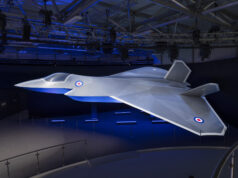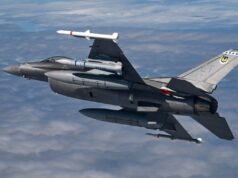Lockheed Martin Sikorsky has progressed to the next phase of NATO’s Next Generation Rotorcraft Capability (NGRC) programme, having been awarded a contract by the NATO Support and Procurement Agency (NSPA) to study integrated platform concepts, according to a press release.
The contract aims to explore how Sikorsky’s X2 rotorcraft can meet NATO’s evolving defence needs.
“Sikorsky is ready to design a rotorcraft prototype for NATO’s NGRC concept study to support defence and deterrence for an ever-changing global environment,” said Andy Adams, vice president of Sikorsky Future Vertical Lift, quoted in the press release.
He also spoke of the X2’s capabilities, which include speed, range, manoeuvrability, survivability, and operational flexibility, thanks to years of investment and rigorous flight testing.
Sikorsky’s European Industry Group, which includes major aerospace suppliers such as BAE Systems, ELT Group, ESG Elektroniksystem-und Logistik GmbH, and others, will contribute to the study. This collaboration aims to integrate their advanced military products into the X2 rotorcraft system.
The X2 rotorcraft have demonstrated their mission relevance through extensive testing and flying, with the S-97 RAIDER technology demonstrator providing critical data. Adams highlighted that this experience positions Sikorsky to offer NATO an integrated rotorcraft system suitable for future operational environments.
NSPA General Manager Stacy A. Cummings noted, “The launch of Concept Study #5 is a significant milestone for the NGRC concept stage activities,” as quoted in the press release. She emphasised NSPA’s commitment to maximising industry expertise and engagement through the competitive award of three parallel contracts, which will yield a range of potential concepts for multinational customers.
Initiated in 2022, the NGRC programme includes France, Germany, Greece, Italy, the Netherlands, United Kingdom, and Canada, with the United States and Spain acting as observers.
The programme seeks to develop a medium-class, multi-role rotorcraft to replace the current medium multi-role helicopters in service. The NSPA aims to meet this requirement efficiently and cost-effectively, leveraging recent technological advances and operational concepts.














An American firm heading up a European helicopter project??? I thought the future was tilt wing valor 247, that’s what the American army is buying to replace Blackhawk.
Lockheed Martin Sikorsky has only progressed to the next stage. Airbus Helicopters and consortium, and Leonardo partnering with Bell. The war drive has a breakdown of the NATO-standard medium helicopter study called ‘concept study 5’ I think.
So we’re part of a programme developing a new, NATO-standard medium helicopter…at the same time continuing our own domestic off-the-shelf medium helicopter programme?
At a time when we’ve got incredibly tight budgets to balance, do we really need two medium helicopter programmes? Given the history of large group projects like this, maybe we’d be better off dropping down to an observer while procuring NMH in bulk. If, in 10-15 years this actually produces a good platform, wonderful. If not, or its delayed significantly, we’ll still have a reasonably young fleet of modern helicopters (albeit with shorter legs).
The domestic programme will be there to see what attributes the UK needs in a MH and if the NMH programme meets those needs guess what we will buy. It seems likely that the NMH programme would want to accomodate all the needs of the UK would it not. The more units the NMH project sells the lower the unit cost plus I suspect some of the build is likely to involve UK companies?😀
M B Hang on this is a nato helicopter so it’s meets a nato standard not uk ? Agree probably working out who would make what parts.
Surely the whole point of a NATO helicopter is that it meets as many of NATO members requirements as possible (including the UK). Preferably all of them and especially the larger members. Therefore each member must look at their own requirements – share them – and the NMH programme will do it’s best to accomodate.
Also it is not really setting a standard other than providing a standard product that meets the needs of all it’s clients.
Isn’t that a good reason for staying inside the project? I suspect it will be a long time before any actual product gets produced out of this.
Is the NMH specific to the UK to replace the PUMA etc, and is the NATO standard to replace Merlin?
The NMH programme will undoubtably plan to be a jack of all trades
Yes, the Puma and Bell 212, 412 and Dauphin replacement program is called the New Medium Helicopter (NMH). However, the MoD have said the aircraft that wins from the three aircraft shortlisted, ie the Blackhawk, AW149 and H175M, are an interim solution. So the MoD are looking at what comes after this. Initially they were keeping a very close eye on the US Army’s Future Vertical Lift -0 Medium competition, where the Bell Valor won, beating the Sikorsky Defiant. Abut the same time both Leonardo and Airbus stated they were investigating a future medium lift concept. Which has now been rolled in to the Next Generation Rotorcraft Capability (NGRC).
The main difference is that the NATO requirements are as less stringent than the US Army’s. So the range and top/cruise speeds are lower. Which better suits the non tilt-rotors from Lockheed Martin/Sikorsky and Airbus.